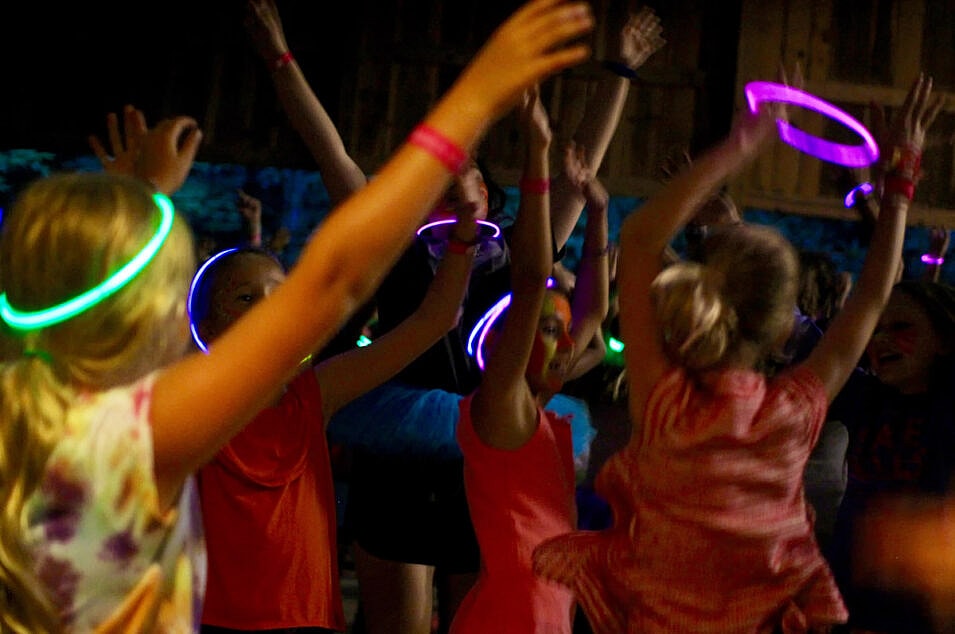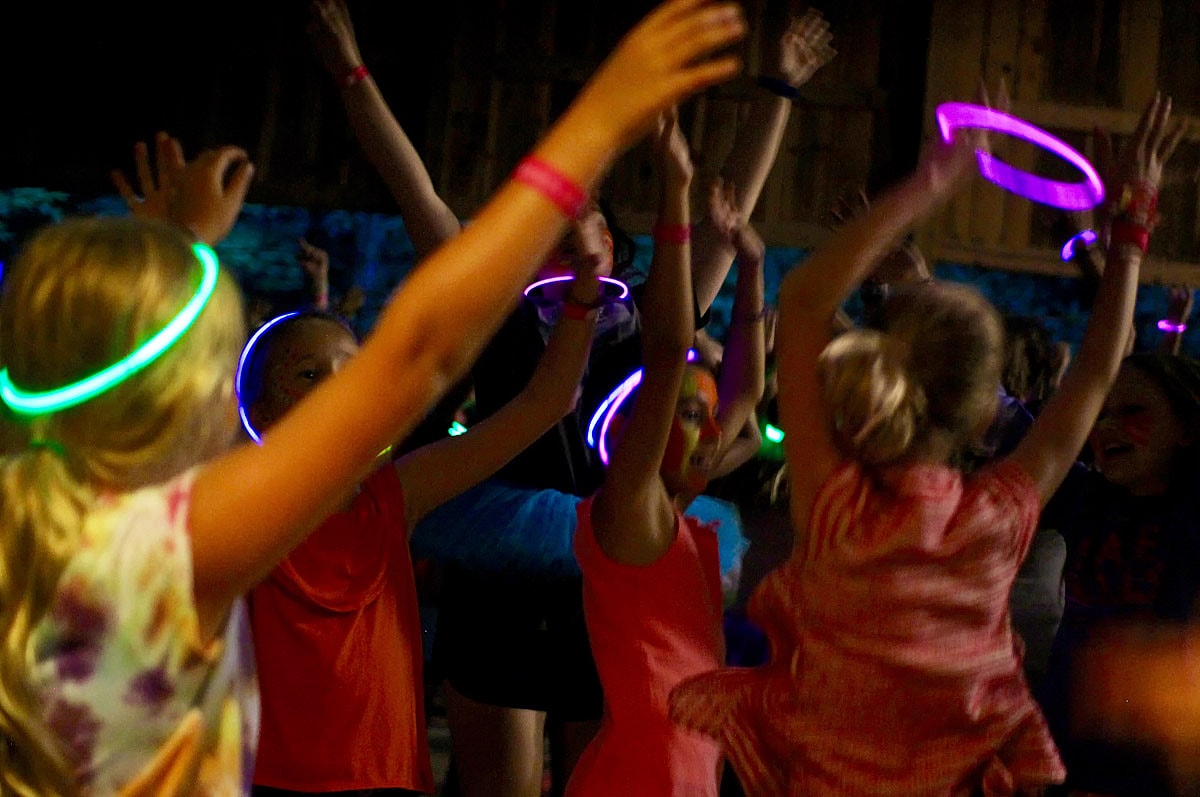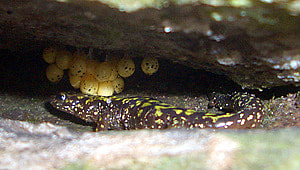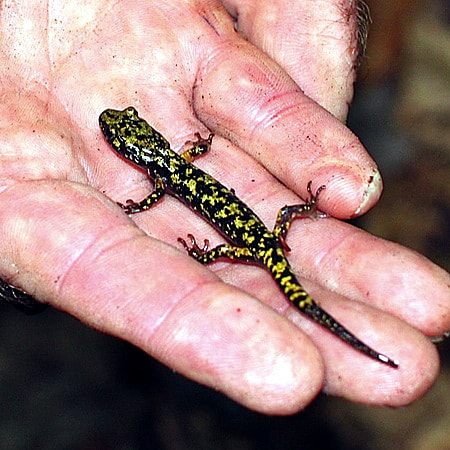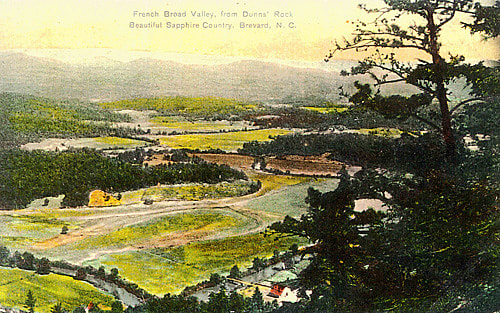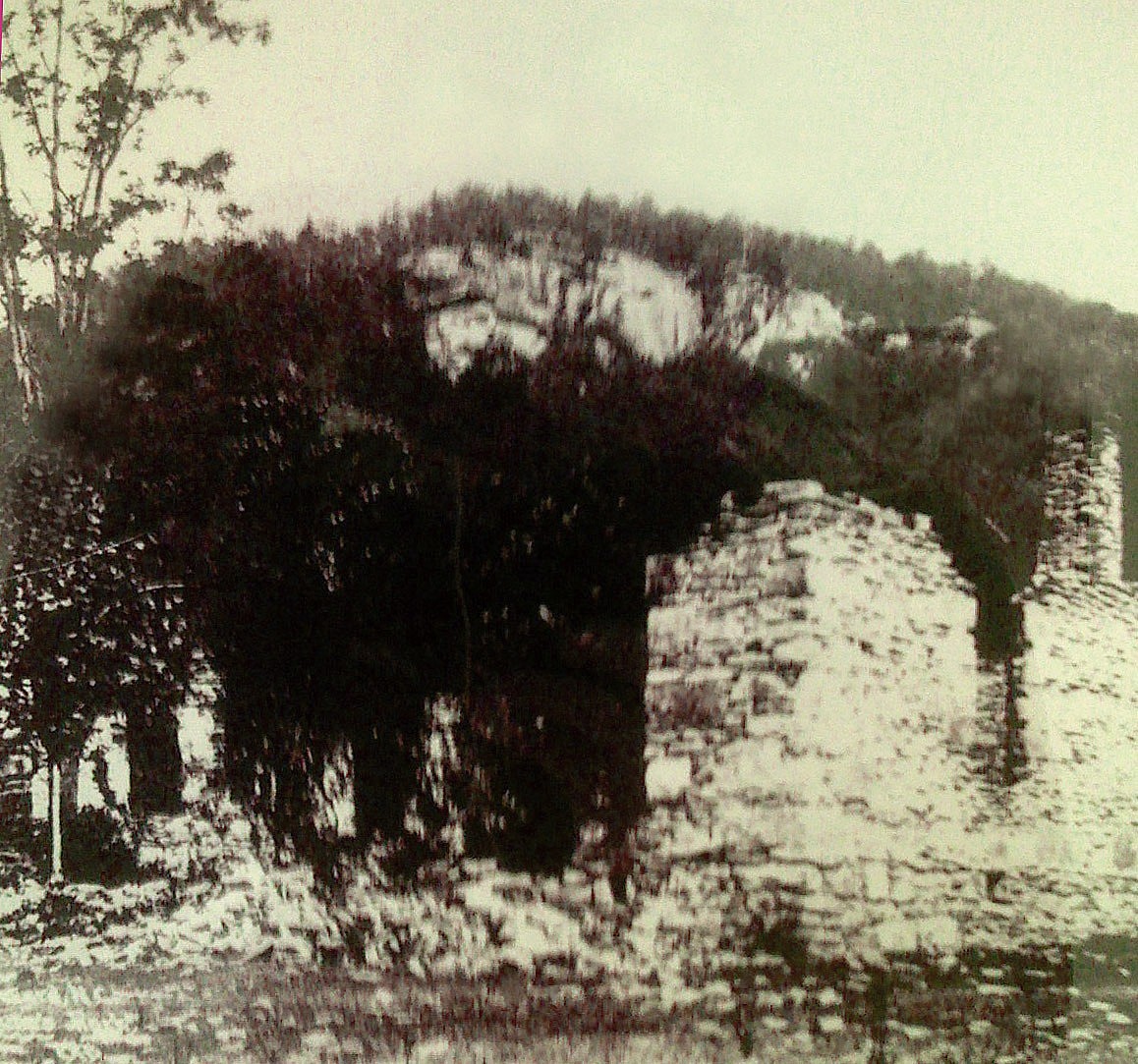Set here in the mountains of western North Carolina, the topography of Rockbrook is really something special. Within its 220 acres, the camp includes amazing natural features including prominent rock outcroppings, waterfalls, creeks and the French Broad River. If you haven’t seen it already, watch this video and then scroll through the posts in this archive about our area in North Carolina. You’ll be impressed by the natural beauty of the camp property and its surrounding area.
After learning more about the camp topography, you’ll quickly realize that when Henry P. Clarke, the father of the camp’s founder Nancy Barnum Clarke Carrier, named this property “Rockbrook,” it was a particularly apt name. Situated between (and below!) two rock landmarks (Dunn’s Rock and Castle Rock), with numerous boulders scattered all around the camp, and as three named creeks (Dunn’s Creek, Rockbrook Creek and Hanty Branch) and several smaller tributaries of the French Broad river carve rocky courses through the camp, the terrain here is very much both stone and water, rock and brook.
Our camp program benefits from these topographical features in a number of exciting ways. There are excellent hiking destinations for example: the magnificent mountain view from the top of Dunn’s Rock, the spray to be felt at the bottom of Stick Biscuit Falls, and the mysterious “Kilroy’s Cabin” found only by bushwhacking for more than a mile through the woods. We have 5 different climbing routes on Castle Rock to tackle, and down below, a nice sandy eddy we can use to launch or take out canoe trips on the French Broad River. A particularly cool example, though, is our camp zip line course since the zips are built between boulders and over creeks. It takes about an hour to do the whole course— 3 zips and 3 challenging adventure bridges —and it continues to be one of the more popular optional activities we offer. The last zip is the fastest and goes right past the office building at the top of the hill giving everyone on the porch a front row seat to see the aerial poses, wide-eyed grins, and hear the yelps of delight multiple times each day.
Equally popular this session, though for different reasons, has been Ga-ga Ball. Played down near our gym in a special octagonal court of 30-inch high wooden walls, GaGa is a form of dodgeball that’s nicely fast-paced, and well-suited for multi-age groups of girls. Three people or thirty people can play, so it’s a great “pick up game” for the girls during their periods of free time each day (before lunch and dinner, and during Twilight in particular). The object of Gaga is to avoid being hit in the legs by a soft ball as it bounces around inside the court after being hit (not thrown) by the players. It takes quick reflexes to jump out of the way as the ball bounces wildly off the walls of the court and the other players alike. Once hit, a player hops out of the court dwindling the number of girls still playing. As the game progresses and one person is left (the winner), the game is over, and everyone can hop back into the court to start a new game. Perpetual play!
Tonight’s Evening Program allowed us to dress up, be silly, and go a little wild on the dance floor. We held an all-girl “glow dance” down in the gym. Without much encouragement, the girls dressed in tie dye t-shirts and other colorful costumes. We pulled out neon face paint to add dots, swirls and stripes of color to their looks, and when we handed out a few hundred glow sticks, dimmed the lights in the gym, and began pumping out upbeat, popular music, we had a fun dance party. No boys, no pressure, no judgment: there was just unbridled excitement and glee as song after song got the girls dancing. And these girls know how to have fun in the groove! —lots of jumping to the beat, well-rehearsed dance moves now and then, and plenty of hands-in-the-air, singing-along choruses. It was another great camp event celebrating the fun of being together, feeling happily relaxed and pulled into an activity so thoroughly that you forgot most everything else and time flew by… so good, and just how we all like.

